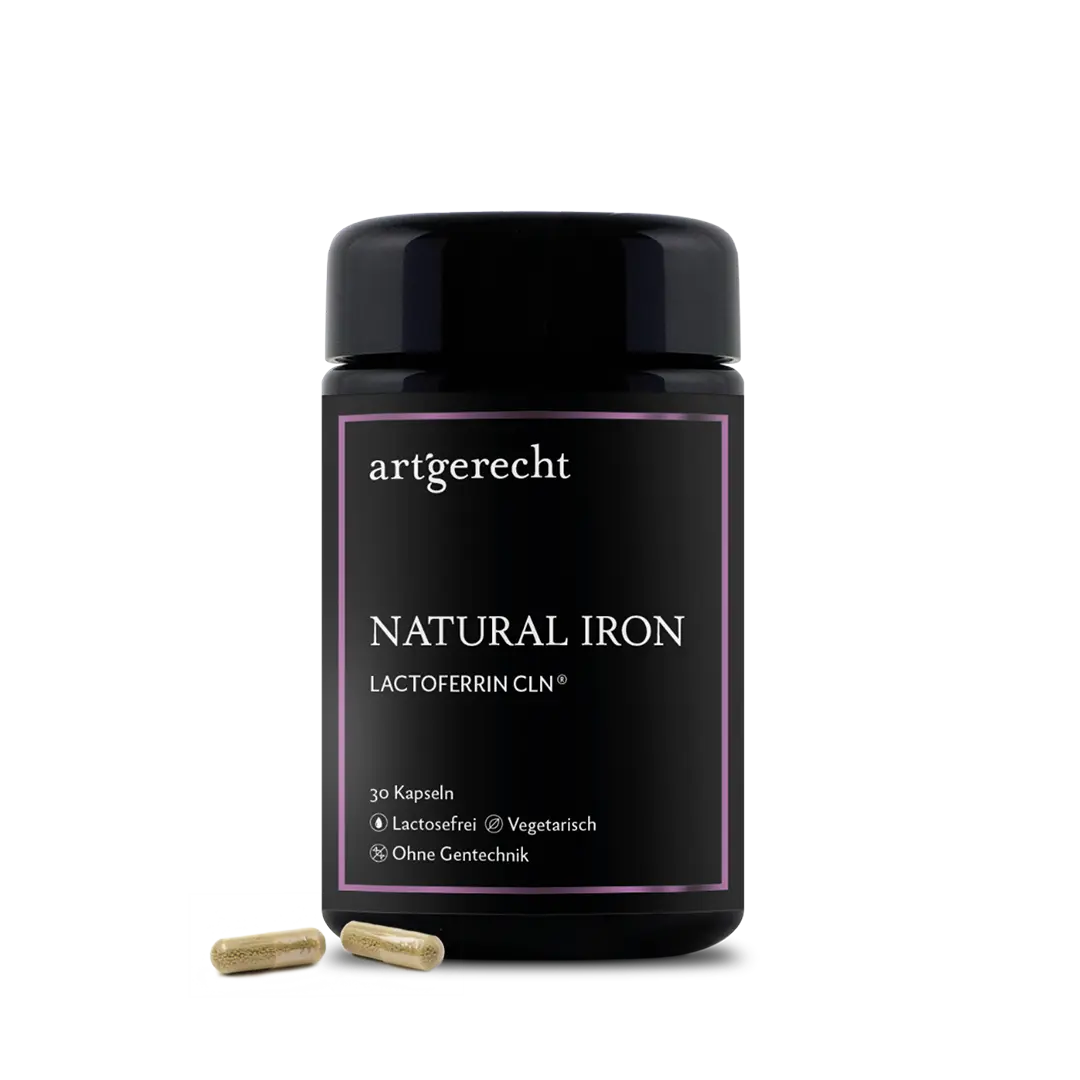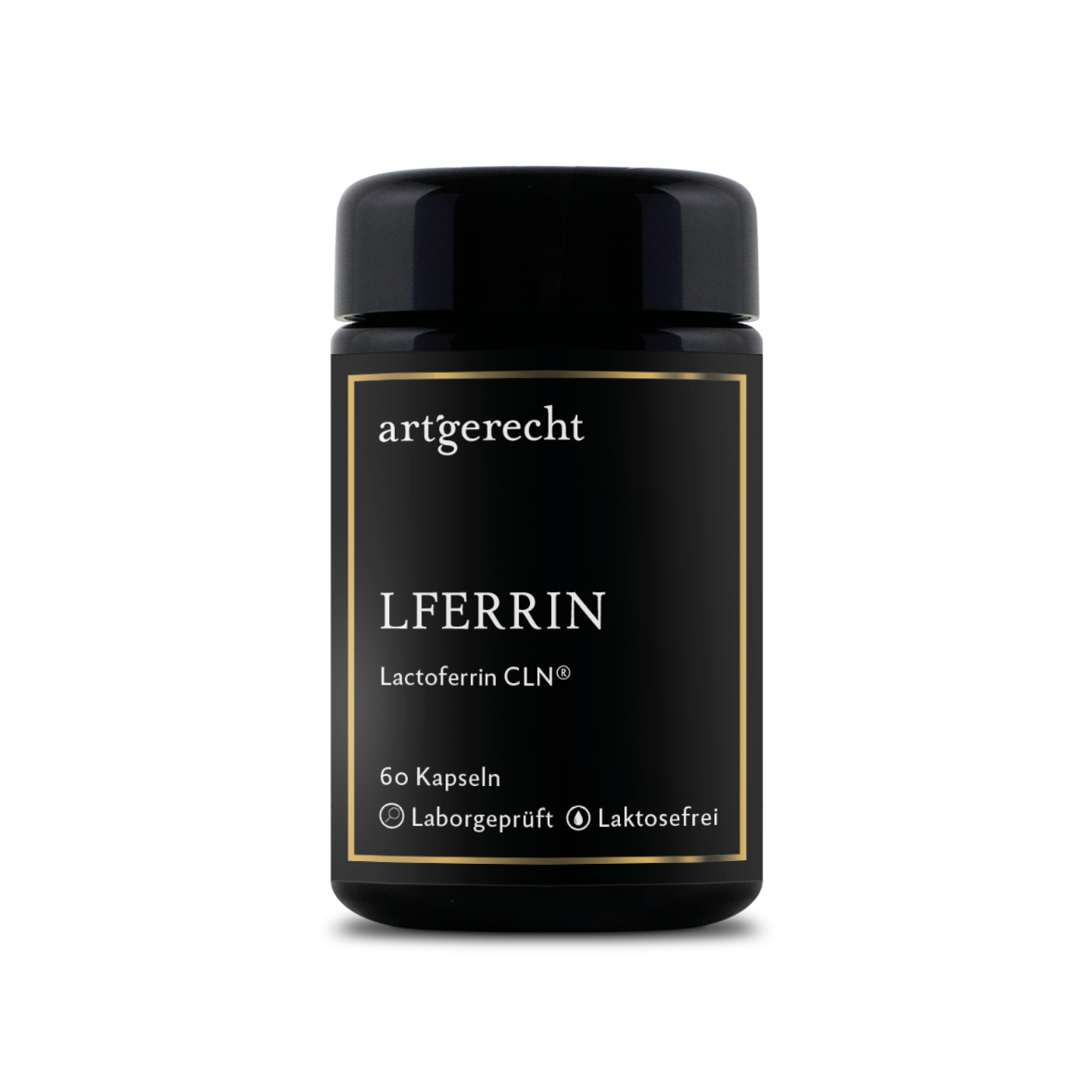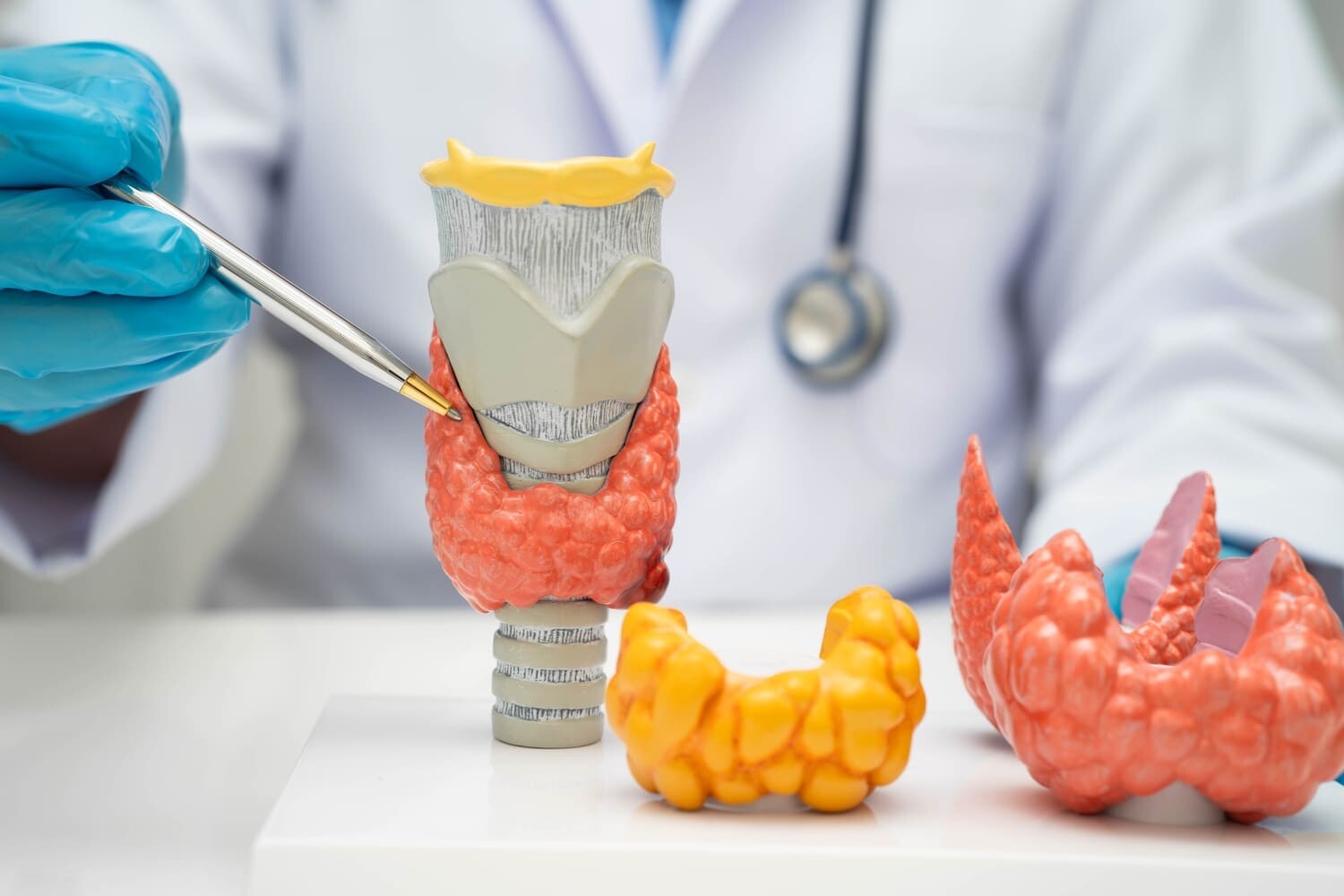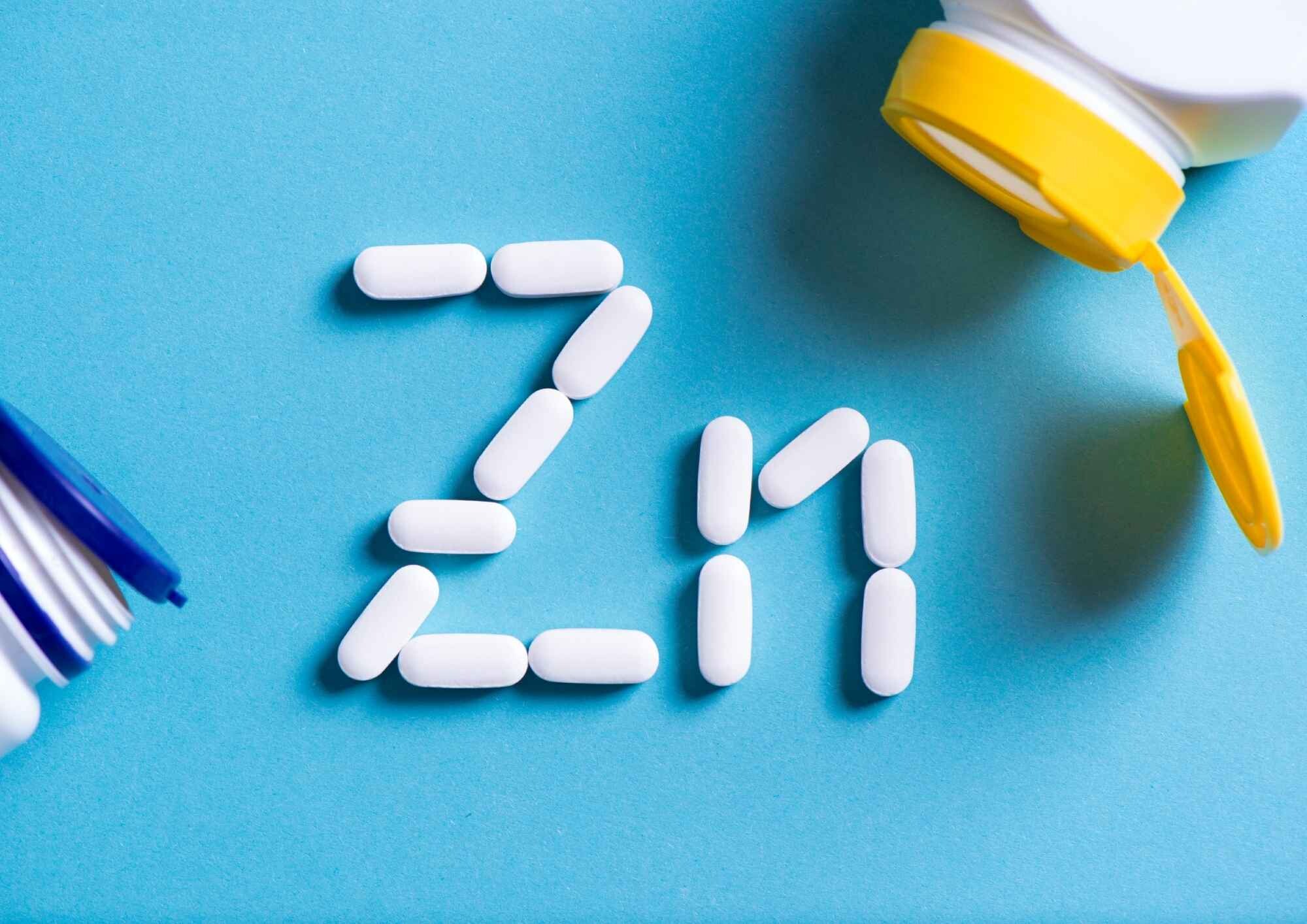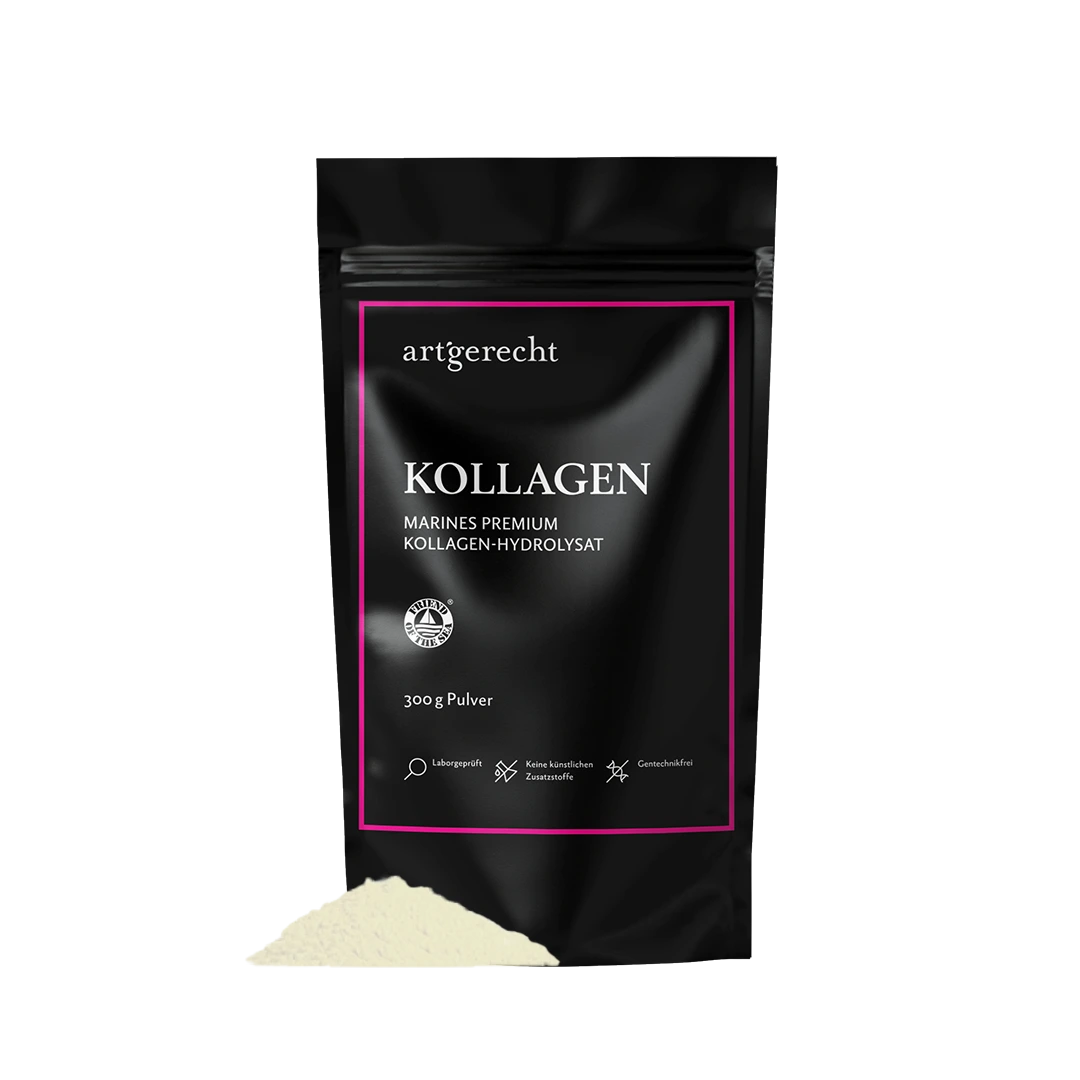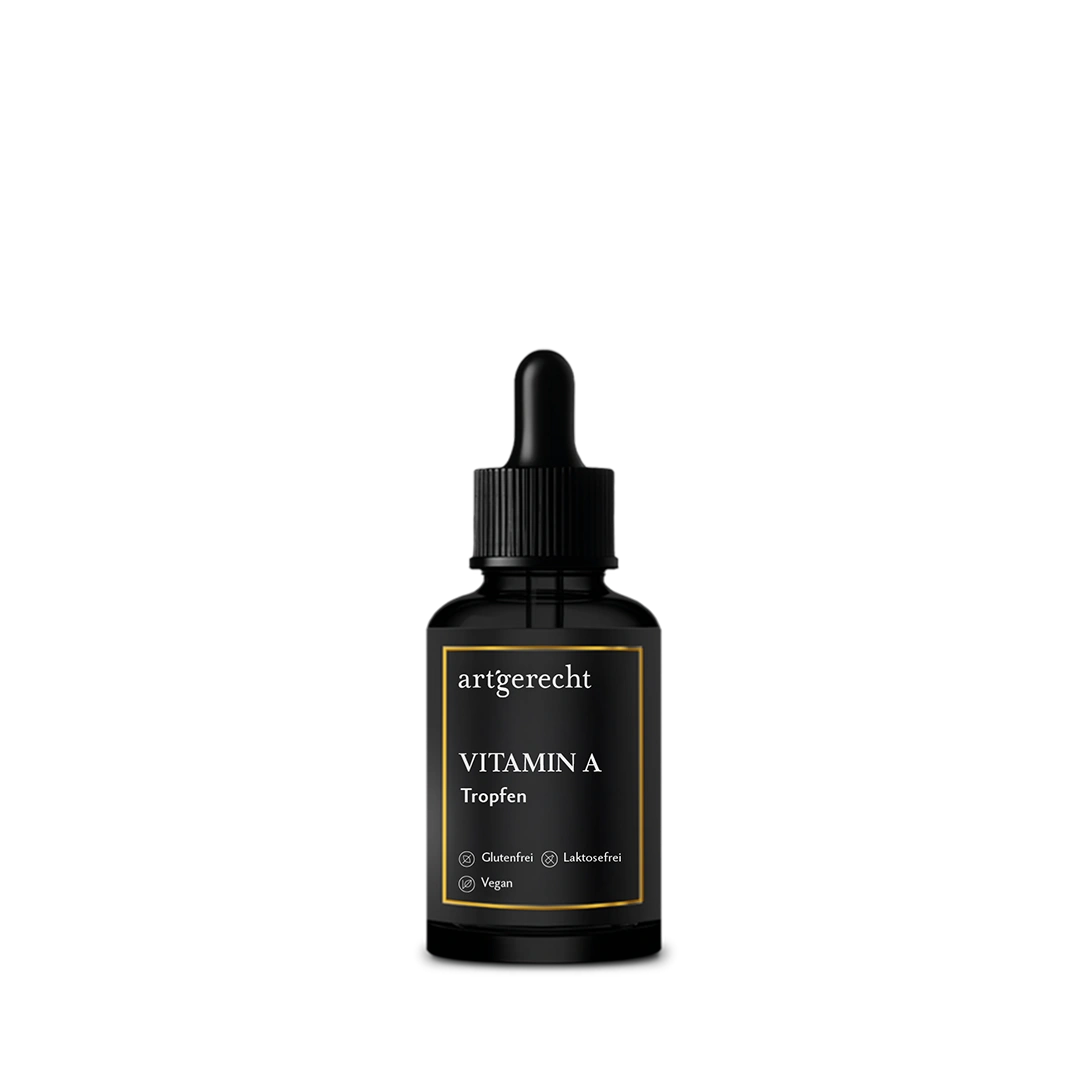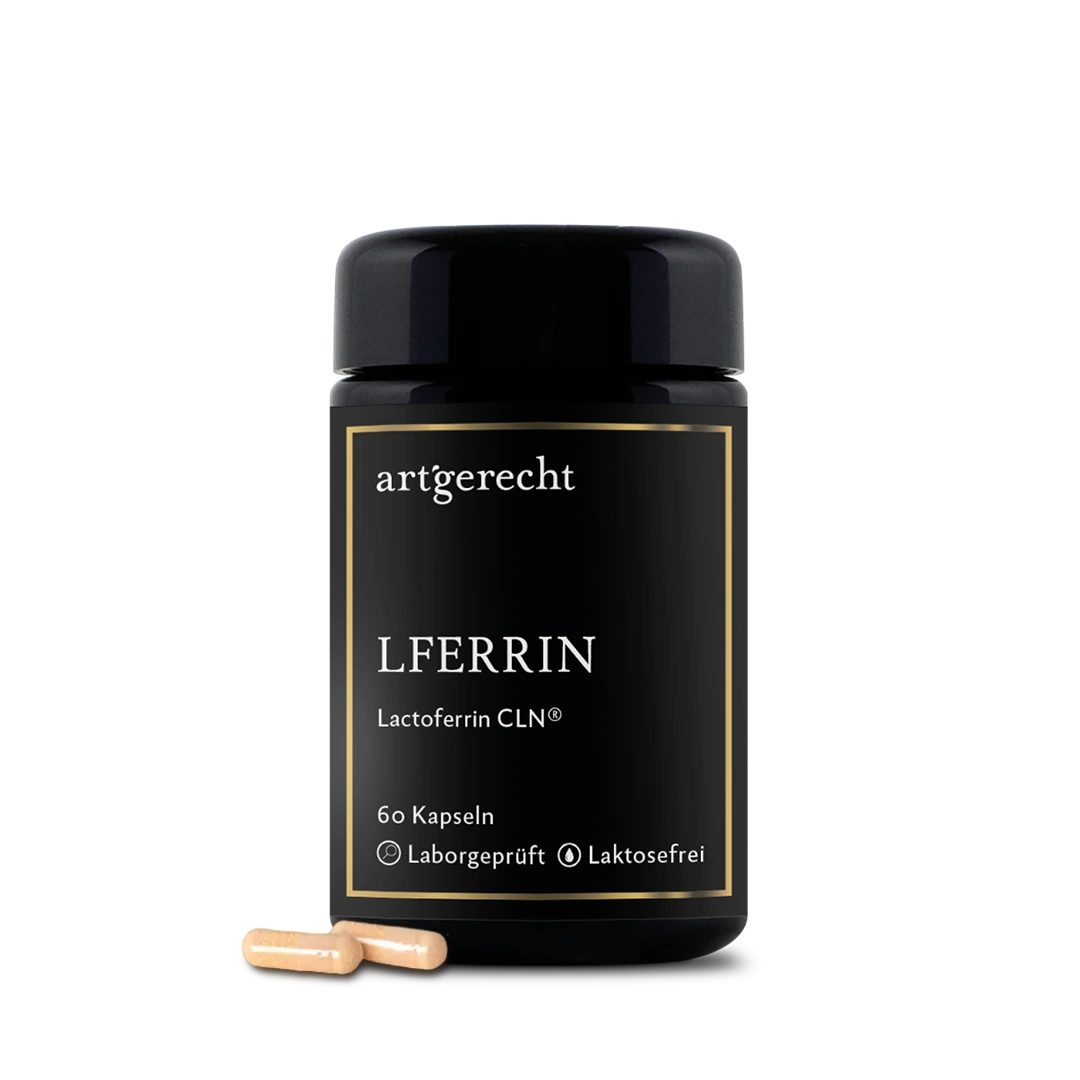With the awakening of nature in spring, days full of energy and vitality await us. But for some people, this time of year brings with it an inexplicable fatigue and a feeling of lack of energy. Iron deficiency, one of the most common nutritional deficiencies in the world, can contribute to these symptoms and make the start of the warm season more difficult.
In this article, we take a look at the importance of iron for our bodies, how an iron imbalance can occur and the impact an iron deficiency can have on our health and wellbeing. From frustration to a lack of motivation - seemingly everyday complaints can have serious causes that need to be understood and dealt with.
What is iron?
Iron is one of the trace elements in the human body. In addition to its function as an oxygen-binding element in hemoglobin in red blood cells, iron also serves as a co-factor in various ionic forms for many enzymatic reactions, as well as for energy production in mitochondria, the „power plants of the cell“. Ultimately, the entire energy metabolism is dependent on an adequate supply of iron.
Iron metabolism, which describes the absorption, regulation and transport of iron, is, in contrast to other minerals such as calcium, sodium and other trace elements in the body, as it can only be regulated via absorption. Iron cannot be actively excreted and is therefore essentially controlled by absorption and uptake regulation.1
The 4-5 g of iron in the human body and the losses over the day in healthy people of approx. 0.5-1.5 mg/day, can usually be compensated through food despite the low absorption rate of 6% (men) to 12% (women)2 as a rule.
Iron deficiency
Iron deficiency is the most common and widespread nutritional deficiency worldwide.3 Epidemiological figures of iron deficiency studies show: ¼ of the world's population suffers from iron deficiency anämia. Most affected are preschool children with just over 47%. Men show the lowest prevalence at just under 13%.4
Risk groups for latent to manifest iron deficiency up to an&ämia are people in growth phases, i.e. children5 (increased iron consumption), women of reproductive age (increased iron loss during menstruation), women during pregnancy (increased iron consumption), breastfeeding (increased iron consumption), women who are breastfeeding;(increased iron consumption), breastfeeding women, athletes (increased consumption), people with diets low in iron and vitamin C and other people who, for example, are undergoing iron supplementation.For example, people who consume iron in the context of inflammatory diseases.6
![]()
Image source: artgerecht
Even an iron deficiency that is not accompanied by anemia is already a problem for the organism. Optimal iron levels are important for performance in sport but also in everyday life. An important parameter for diagnostic determination is the iron storage value, the so-called serum ferritin.7 However, serum ferritin alone is not enough: transferrin and transferrin concentration should also be part of the diagnostic work-up in order to differentiate whether a latent iron deficiency is already present, even without an&anemia is present, but which could explain symptoms of fatigue, exhaustion and lack of energy. Overall, laboratory diagnostics should be carried out more extensively in the case of existing symptoms than the sole assessment of a complete blood count and a serum iron value.
Symptoms of iron deficiency
Due to the close relationship between iron and energy metabolism in the mitochondria, an iron deficiency also has a significant impact on performance and shows symptoms such as
- fatigue
- bloating
- drowsiness
- dizziness
- .li>Concentration difficulties
- Infection susceptibility
- White grooves on the fingers
- Increased hair loss
- Torn corners of the mouth
- Headaches
- Dizziness
These general symptoms and the frequent lack of diagnosis often lead to a lack of treatment for iron deficiency.
Causes of iron deficiency
In addition to malnutrition and deficiency, physiological and pathophysiological processes cause iron to be absorbed to varying degrees.
Iron that is ingested with food is absorbed via a transport channel in intestinal epithelial cells (DMT 1). Iron Fe2+ is absorbed in the process. Iron can also be absorbed in other forms via specific transport channels. In animal foods, such as meat, iron is present bound as Häm iron. This Häm iron can be absorbed via the so-called HCP-1 channel.8 Iron contained in plants is usually present as plant ferritin (storage iron), which is also absorbed via a separate channel.
If the cause of the iron deficiency is not in the diet, the function of absorption must be taken into account and is a possible cause of iron deficiency. The resorption rate is regulated by the organism itself and is inhibited under certain circumstances:
In the context of an inflammatory situation, increased amounts of pro-inflammatory messenger substances (cytokines) are released by immune cells. One of these is interleukin 6. The cytokines travel through the blood circulation to the liver, where they stimulate the production and secretion of hepcidin. Hepcidin is a peptide that has the task of regulating or inhibiting the absorption of iron by binding to the so-called ferroportin channel. This channel is responsible for exporting iron from intestinal epithelial cells, liver cells and immune cells (macrophages) into the bloodstream.
By binding hepcidin to ferroportin, the iron remains in the cells without being able to be used for further metabolic processes.9 Although it appears that this process is counterproductive for the organism, a look at an evolutionary perspective shows the benefits of hepcidin synthesis: An activated immune system, and thus increased interleukin 6 secretion, usually meant pathogen exposure to bacteria for our ancestors.
Bacteria also need iron for their metabolism.10 If there is a lack of iron, bacteria are less able to multiply, which in turn enables the immune system to fight the pathogens as quickly as possible;as quickly as possible, even if this means that metabolic processes cannot take place or can only take place more slowly for the organism itself.
From today's perspective, however, this protective mechanism is problematic: it is known from branches of research such as psychoneuroimmunology and stress research that other influences can also activate the immune system.11
These include lifestyle factors such as:
- Proper nutrition
- Lack of exercise
- Overeating/li>
- Too much exercise
- Lack of sleep
- Environmental toxins
- Psychoemotional and chronic stress
These types of immune system activations are also referred to as low-grade inflammatory situations, which do not result in an acute infection, but rather a chronic activity of the immune system. Low-grade inflammation is associated with numerous non-infectious chronic and degenerative diseases of civilization.12
Conversely, chronic activation of the immune system also leads to increased synthesis of hepcidin and thus a chronic disturbance in the distribution of iron, which can also lead to inflammation-related anaemia.13
![]()
Image source: species-appropriate
What can I do if I have an iron deficiency?
The first thing to do is to eat a balanced diet. Iron is found in many foods. However, due to the different storage forms of iron in foods, there is also a different bioavailability.
The composition and components of the diet can also have a significant effect on iron absorption: According to this, various plant substances such as phytates, polyphenols especially in tea and coffee have negative effects on iron absorption. The same applies to calcium, e.g. from milk and dairy products. It is beneficial to combine plant-based iron with ascorbic acid (vitamin C) to improve absorption, as vitamin C prevents the iron from being converted into a non-absorbable form.14
If the amount of iron consumed through food is not sufficient, iron supplementation is medically indicated. Free iron supplements are taken orally. However, this bivalent iron Fe2+ causes the increased formation of free radicals in the intestinal cells – so-called radical oxygen indices (ROS). The intake of larger quantities of free iron in the bivalent form (Fe2+), among other things, leads to the formation of hydroxyl radicals (iron and hydrogen peroxide react). This so-called Fenton reaction results in the Fe2+ being converted into Fe3+ for further transportation. However, the free radicals produced during the reaction lead to programmed cell death in large quantities.15
The presence of an iron chelator, i.e. an iron-binding substance, can downregulate this process.19 Increased cell death leads to damage to the intestinal barrier and is associated with other side effects.16 Patients using iron supplements experience these side effects as constipation, nausea, diarrhea, abdominal pain, vomiting, heartburn and dark stools.17 In order to reduce the side effects, Fe3+ preparations are also used, which are better tolerated but must be taken before ingestion;but must first be converted into Fe2+ before absorption, which reduces bioavailability and also forms free radicals in the intestinal lumen.18
New ways of iron regulation
Based on a consideration of the physiological metabolic processes&Based on a consideration of the physiological metabolic processes of the iron balance and systemic processes in the organism, new ways of treating iron deficiency are being considered in scientific studies:
Lactoferrin, an iron-binding glycoprotein that can be produced by immune cells and glandular cells, belongs to the group of transferrins. Lactoferrin is therefore a natural transporter for iron and can influence the iron balance.19 As an immune protein, it also influences the defence against infections, with antibacterial, antiviral and antifungal properties.20 Lactoferrin is also an immunomodulator and can influence the functions of the immune system, even regulating them in the event of a malfunction.21
Lactoferrin is found in large quantities in the milk of mammals. Structurally and functionally, it is almost identical from cow's milk (bovine lactoferrin) compared to human lactoferrin.22 The extraction of lactoferrin from cow's milk is the common method for producing it in large quantities for preventive and therapeutic purposes. However, despite the diverse properties of lactoferrin and the high reactivity of the molecule, purification (purification) is of major importance with regard to the production of lactoferrin;functionality, bioavailability and mode of action of lactoferrin (bLF) in the human body.23
Lactoferrin mainly influences the following causal mechanisms:
Through its anti-inflammatory and immunomodulatory properties24, inflammatory situations are influenced: In chronic inflammation, cytokines that are released, such as interleukin 6, which stimulates hepcidin synthesis, are downregulated by lactoferrin, which has been proven byin vitro studies.25 Initial clinical studies were able to demonstrate this process. Pregnant women with iron deficiency anaemia were examined.26 A meta-analysis from 2022 was able to show that lactoferrin has a better effect on serum iron, serum ferritin and hemoglobin concentration than ferrous sulphate and at the same time has a reducing effect on fractional iron absorption and interleukin-6 levels.27
Conclusion
In spring, we can expect new energy and vitality;Spring brings us new energy and vitality, but for some, this time of year means tiredness and listlessness - possible signs of iron deficiency. Iron is crucial for our energy metabolism and vitality. A balanced diet and, if necessary, supplementary measures can counteract this deficiency. New research approaches such as the use of lactoferrin show promising results and could improve treatment options in the future. A conscious approach to our health enables us to enjoy the coming seasons with full strength and joie de vivre.
Literature references
1Vaulont, S. et al: Of mice and men: The iron age. J Clin Invest. 2005; 115(8):2079-2082
2Kaltwasser, J. P. & Braner, A.: Iron deficiency and other hypoproliferative anämias. Harrison's Internal Medicine. Berlin 2003. p. 733.
3WHO (2001): Iron Deficiency Anaemia Assessment, Prevention, and Control - A guide for programme managers.
4Durrani, A. M.: Prevalence of Anemia in Adolescents: A Challenge to the Global Health. Acta Scientific Nutritional Health 2.4 (2018): 24-27.
5Grant, C.C. et al: Population prevalence and risk factors for iron deficiency in Auckland, New Zealand. Journal of Paediatrics and Child Health 43 (2007): 532–538.
6Lee, J.-O. et al: Prevalence and Risk Factors for Iron Deficiency Anemia in the Korean Population: Results of the Fifth Korea National Health and Nutrition Examination Survey. Korean Med Sci 2014; 29: 224-229.
7Knovich M.A. et al: Ferritin for the Clinician. Blood Rev. 2009 May; 23(3): 95–104.
8Sharp, P., Srai, S. K.: Molecular mechanisms involved in intestinal iron absorption. World J Gastroenterol 2007 September 21; 13(35): 4716-4724.
9Cherayil, B.J.: Iron and Immunity: Immunological Consequences of Iron Deficiency and Overload. Arch. Immunol. Ther. Exp. (2010) 58:407–415.
10Andrews, S.C. et al: Bacterial iron homeostasis. FEMS Microbiology Reviews 27 (2003): 215-217.
11Rohleder, N.: Stimulation of Systemic Low-Grade Inflammation by Psychosocial Stress. Psychosomatic Medicine 76:181Y189 (2014).
12Liu, Y.Z. et al: Inflammation: The Common Pathway of Stress-Related Diseases. Frontiers in Human Neuroscience. June 2017 | Volume 11 | Article 316.
13Ganz, T. & Nemeth, E.: Iron imports. IV. Hepcidin and regulation of body iron metabolism. Am J Physiol Gastrointest Liver Physiol 290: G199 –G203, 2006.
14Zijp, I.M. et al: Effect of Tea and Other Dietary Factors on Iron Absorption. Critical Reviews in Food Science and Nutrition, 40(5):371–398 (2000).
15Eid, R. et al: Iron mediated toxicity and programmed cell death: A review and a reexamination of existing paradigms. Biochimica et Biophysica Acta 1864 (2017): 399–430.
16Kortman, G. et al: Nutritional iron turned inside out: intestinal stress from a gut microbial perspective. FEMS Microbiol Rev 38 (2014): 1202–1234.
17Tolkien, Z. et al: Ferrous Sulfate Supplementation Causes Significant Gastrointestinal Side-Effects in Adults: A Systematic Review and Meta- Analysis. POLS One 2015.
18Behnisch W. et al: S1 Guideline 025-021: Iron deficiency anämia. AWMF online current status: 01/2016.
19Pauline P. Ward & Oria M. Conneely: Lactoferrin: Role in iron homeostasis and host defense against microbial infection. BioMetals 17: 203–208, 2004.
20Chen, P W, Y W Ku, and F Y Chu. 2014. “Influence of Bovine Lactoferrin on the Growth of Selected Probiotic Bacteria under Aerobic Conditions.” Biometals: an international journal on the role of metal ions in biology, biochemistry, and medicine 27(5): 905–14.
21Puddu P. et al: Immunomodulatory effects of lactoferrin on antigen presenting cells. Biochemistry 91 (2009): 11-18.
22Valenti P, Antonini G. Lactoferrin: an important host defense against microbial and viral attack. Cell Mol Life Sci (2005) 62:2576–87.
23Moradian, F.: Lactoferrin, Isolation, Purification and antimicrobial effects. Journal of Mazandaran University of Medical Sciences, August 2011.
24Legrand, D.: Overview of Lactoferrin as a Natural Immune Modulator. The Journal of Pediatrics. 2016. Vol. 173S.
25Cutone, A. et al.: lactoferrin efficiently counteracts the inflammation-induced changes of the iron homeostasis system in Macrophages. Frontiers in Immunology June 2017 | Volume 8 | Article 705
Paesano.
26R. et al: The influence of lactoferrin, orally administered, on systemic iron homeostasis in pregnant women suffering from iron deficiency and iron deficiency anaemia. Biochimie 91 (2009) 44e51
27.
27Zhao X, Zhang X, Xu T, Luo J, Luo Y, An P. Comparative Effects between Oral Lactoferrin and Ferrous Sulfate Supplementation on Iron-Deficiency Anemia: A Comprehensive Review and Meta-Analysis of Clinical Trials. Nutrients. 2022 Jan 27;14(3):543. doi: 10.3390/nu14030543.


